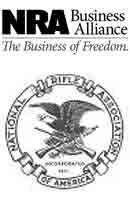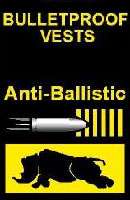Here is the TSA's advice about Flying with guns and ammunition:
(From the TSA website)
You may only transport firearms, ammunition and firearm parts in your checked baggage. Firearms, ammunition and firearm parts are prohibited from carry-on baggage.
There are certain limited exceptions for law enforcement officers who may fly armed by meeting the requirements of Title 49 CFR § 1544.219. Law enforcement officers should read TSA policies on traveling with guns.
The key regulatory requirements to transporting firearms, firearm parts or ammunition in checked baggage are:
- You must declare all firearms to the airline during the ticket counter check-in process.
- The firearm must be unloaded.
- The firearm must be in a hard-sided container.
- The container must be locked.
- We recommend that you provide the key or combination to the security officer if he or she needs to open the container. You should remain present during screening to take the key back after the container is cleared. If you are not present and the security officer must open the container, [the TSA] or the airline will make a reasonable attempt to contact you. If we can't contact you, the container will not be placed on the plane. Federal regulations prohibit unlocked gun cases (or cases with broken locks) on aircraft.
- You must securely pack any ammunition in fiber (such as cardboard), wood or metal boxes or other packaging that is specifically designed to carry small amounts of ammunition.
- You can't use firearm magazines/clips for packing ammunition unless they completely and securely enclose the ammunition (e.g., by securely covering the exposed portions of the magazine or by securely placing the magazine in a pouch, holder, holster or lanyard).
- You may carry the ammunition in the same hard-sided case as the firearm, as long as you pack it as described above.
- You can't bring black powder or percussion caps used with black-powder type firearms in either your carry-on or checked baggage.
[The TSA] and other authorities strictly enforce these regulations. Violations can result in criminal prosecution and civil penalties of up to $10,000 per violation.
Airlines may have their own additional requirements on the carriage of firearms and the amount of ammunition that you may have in your checked baggage. Therefore, travelers should also contact the airline regarding its firearm and ammunition carriage policies.
Also, please note that many other countries have different laws that address transportation and possession of firearms. If you are traveling internationally, please check with the authorities at your destination about their requirements.
Transporting Guns
If you are taking your gun with you somewhere you need to be aware of local laws. As far as safety goes, be sure the guns are unloaded. Most of the time you should have them in a box in the trunk. You should also never leave your vehicle unlocked with a gun in it (this is illegal in Washington state) your vehicle needs to be locked and the gun needs to be out of sight. Gun racks look cool, but are not the safest way to transport your guns.
Flying with guns is another story. You can take your gun with you, but you may only take guns, ammunition, and gun parts in your checked luggage. None of these items are allowed in your carry-on. Read this advice from the Transportation Safety Administration.











